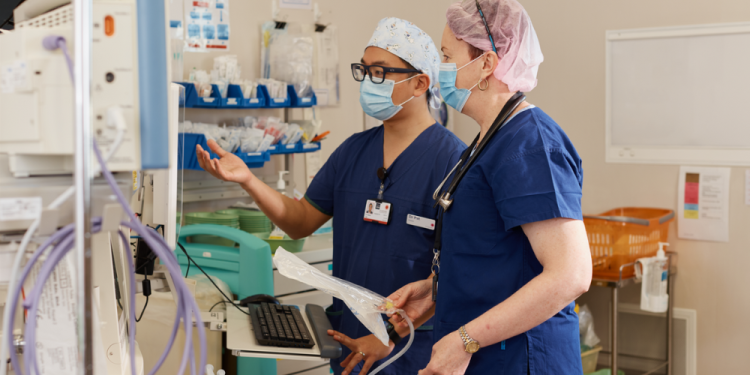
High-flow nasal oxygen has been shown to reduce breathing problem risks for pregnant women undergoing caesarean sections and could be more widely used in surgery.
More than 100,000 babies are born by caesarean section in Australia each year. When general anaesthesia is required for these operations, oxygen is commonly delivered via a face mask.
Seventy participants in a trial held at the Women’s found the nasal oxygen system acceptable for use. Researchers found it more effectively delivered a constant flow of oxygen to pregnant women at the start of a general anaesthetic for the birth of their baby.
The participants were recruited over a period of 12 months and each participant was tested on both modes of oxygen.
The randomised trial, in which pregnant women were allocated high-flow nasal oxygen using Optiflow or oxygen via a traditional face mask, also showed that high-flow nasal oxygen may be safer to use.
Lead Researcher Dr Patrick Tan said the study showed high-flow nasal oxygen may reduce uncommon complications of anaesthesia and improve outcomes for mothers and their babies.
“The results are the clearest signal to date that high-flow nasal oxygen could be of significant benefit to pregnant women undergoing general anaesthesia,” Dr Tan said.
“The overarching aim of this arm of our research has always been to make general anaesthesia safer for our pregnant mums.
“The results of this randomised trial are exciting because they pave the way for the use of a different type of oxygen delivery system in pregnant women having anaesthetics.”
Dr Patrick Tan was awarded the 2021 Gilbert Brown Prize from the Australian and New Zealand College of Anaesthetists for his work.